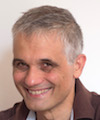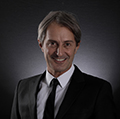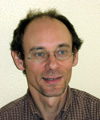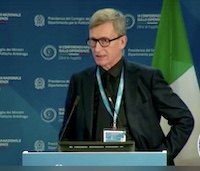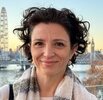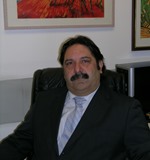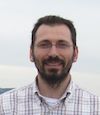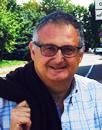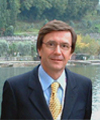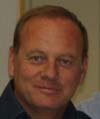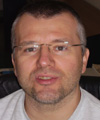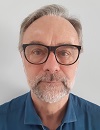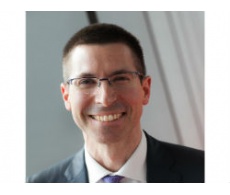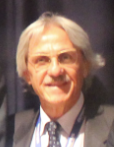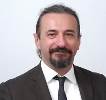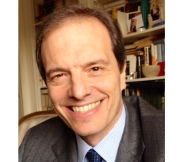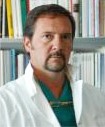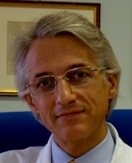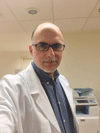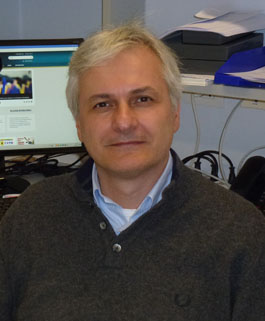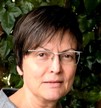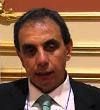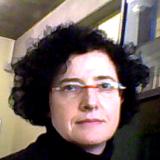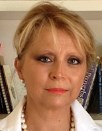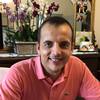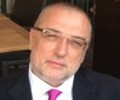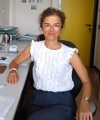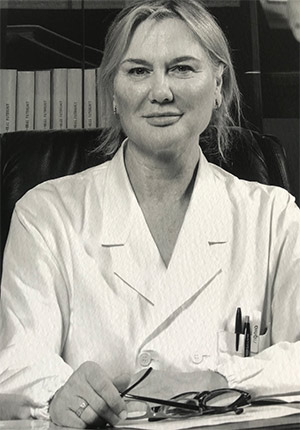The teaching is organized as follows:
Learning outcomes
------------------------
MM: DIDATTICA E PEDAGOGIA SPECIALE
------------------------
Course objectives: The course explores the meanings of pedagogical issues and educational, related to persons with special needs, to identify the most appropriate modalities of professional approach in action. It also intends to focus on the practitioner's ability to deal with new conceptual models and processes to achieve cultural integration and inclusion. After completing the course, the student will be able to: - know the educaton elements of Special Needs; - Explore dimensions and innovative visions to foster integration and inclusion, in the different professional context and particularly about health of special neds; - Explore strategies and methods of education about with Special Needs patients in Special Care Dentistry
------------------------
MM: STATISTICA MEDICA
------------------------
The course aims to introduce the basic theoretical tools of Quantitative Medicine. The course points to prepare students to: - describe, interpret and communicate appropriately the information gathered on a collective of patients (or other experimental units); - assess the reliability of the measurements in the biomedical field, in terms of sensitivity, specificity, accuracy and precision; - generalize the observations collected on a limited number of subjects to the population of origin using elementary inferential techniques - read critically the articles of the biomedical area
------------------------
MM: PSICOLOGIA GENERALE
------------------------
Neurobiological and neurophysiological correlates of human cognitive functions. Neurospychological evidence of cognitive function deficits as a result of focal cerebral lesions.
------------------------
MM: INFORMATICA
------------------------
The course will present the basic concepts of computer science, such as the notion of algorithm, code, information encoding together with an introduction to programming languages, computer architecture and computer networks.
------------------------
MM: STORIA DELLA MEDICINA
------------------------
To obtain a critical knowledge of the historical evolution of medical and biological sciences from the antiquity until the current time, with special attention to the principles of the scientific method. The course encompass also a section about the history of dentistry and related disciplines. The program is divided in two main sections: General section: Epochs, events and figures in the history of medicine Special section: History of dentistry
Program
------------------------
MM: DIDATTICA E PEDAGOGIA SPECIALE
------------------------
Introduction to Education and Special Education Introduction to the concepts of integration and Inclusive Education Special needs education and rehabilitation sciences, The educational special Deficit, disability, International Classification of Special Needs; ICF Classification The problems of special education: analysis of deficits in educational perspective Comparison and discussion with the international literature Methodology of Education in Special Needs Dentistry;
------------------------
MM: STATISTICA MEDICA
------------------------
The purpose of the statistics in medicine. Descriptive statistics 1) The measurement process and the different types of measurement scales 2) The statistical variables and their representation by means of frequency distributions: tables with one or two variables. 3) Graphical representation of a frequency distribution 4) Measures of position 5) Measures of dispersion. Probability 1) Definitions of probability 2) The rules of calculation of probability 3) Independent and conditional probability 4) The sensitivity and specificity of a diagnostic tool 5) ROC curves 6) Bayes theorem and its applications to differential diagnosis 7) Random variables 8) Normal Distribution 9) Population and sample. Introduction to the sampling theory 10) The sampling distribution of an estimator (sample mean) Inferential Statistics 1) Point and interval estimates: confidence interval 2) The logic of hypothesis testing: the null and the alternative hypothesis; first and second type error; the power of a test 3) Comparison of a sample mean with a population mean: z-test and t-test 4) Comparison of two sample means5) Chi-square test 6) Correlation and regression
------------------------
MM: PSICOLOGIA GENERALE
------------------------
Introduction to Cognitive Psychology and Behaviorism Psychology as a Biological Science, scientific approach to cognitive operation research Behaviorism Psychology Methods: Reaction Times, Subtraction Method, EEG, Evoked Potentials, Functional Magnetic Resonance, Imaging Consciousness states. Sleep: Sleep Types and EEG recording. REM sleep Conditioning and Learning Learning as an adaptation process Orienting Response as basic Learning Reflex, Abituation and Habit Classic Conditioning (Pavlov) Variables involved in classic conditioning Extinction Operating Conditioning Puzzle Box (Thorndike) Law of Effect Reinforcement Skinner’s Cage Relative reinforcement: ratio and interval, fixed and variable Avoidance and escape learning Reinforcement and Punishment Latent Learning Cognitive-Behavioral Therapy Systematic Densensitization (graduated exposure therapy) Counterconditioning (Stimulus Substitution) Avversive Conditioning Observational Learning - Bandura Memory Sensory Memory Working Memory Long Term Memory Encoding Storage Recall Interference Priority and Recency Effects Processing Organization Visualization Representation Context Explicit Memory Implicit Memory Sleep effects on Memory Retrograde and Anterograde Amnesia Brain areas involved in memory HM case Korsakoff Amnesia Episodic Amnesia Electroconvulsive therapy and amnesia Shock Memory High Capacity Memory Abused Children Testimony Emotional Memory Motivation-Emotions - Motivations, Hedonism - Needs, Drives, Incentives, Expectation, Goals - Maslow Theory, Autorealization, Self Realization - Intrisic and Ectrinsic Motivations - Motivation to Success, Self Efficacy - Adaptative Emotions - Physiological, Behavioral and Cognitive correlates - Limbic System - Facial Expressions - Emispheric specialization for emotions recognition - Affective prosody and emispheric specialization - Emotions and Amigdala - Kluver-Bucy syndrome - Emotions and Cognitive Functions: Memory, Decision Making, Attention - Sense of humor - Emotions and Interpersonal Relationships: Guilt Trip, and Embarrassment - Emotion Theories: James-Lange (spinal cord lesions), Cannon-Bard, Schacter-Singer, Facial Feedback Intelligence Unitary function or many functions Intelligence measurement: Intelligence Test Intelligence Quotient Factorial Intelligence Theories Metacomponents and Executive Functions Hereditariness and environment Variables of Intelligence Frontal Syndrome Frontal Syndrome Perseveration and Imitation Phineas Gage case Frontal syndrome and emotional reactions Pesudodepression and pseudopsychopathy Sexual behavior and olfactory perception
------------------------
MM: INFORMATICA
------------------------
- Introduction - Information encoding - Algorithms and problem solving. - Languages for information encoding - Basics on hardware: the architecture of a computer. - Basics on software: the operating system. - Notions on networks: networks and protocols. - Applications - Security
------------------------
MM: STORIA DELLA MEDICINA
------------------------
General section: Epochs, events and figures in the history of medicine A) Paleopathology B) Medicine in ancient civilizaqtions C) The classic antiquity: medicine in Greece and Rome D) The Islamic medicine E) The European Middle Ages: -the School of Salerno -the rise of universities and the teaching of medicine -the origins and development of the hospital assistance -medieval medicine and surgery F) XV, XVI and XVII century -the Humanistic Period and the Renaissance -the advancements of anatomy -surgery in the XVIth century -the experimental method in medicine. Harvey and the doctrine of blood circulation -anatomy and microscopical anatomy -medical and surgical schools in XVIth century G) Medicine in eighteenth century -anatomy and physiology -Morgagni and the beginnings of morbid anatomy -the medical systems -the vaccination -the surgery -the anatomo-clinical method H) The scientific developments of nineteenth century -anatomy, physiology, biochemistry -the Cell Theory, histology and hystopatology -microbiology and infectious diseases -the clinics and pharmacotherapy -developments in surgery: anesthesia, antisepsis, asepsis -the new instruments for diagnosis -medical and surgical specialization. Special section: History of dentistry -the paleopathology and ancient findings of oral diseases -the care of teeth in ancient civilizations, in the Middle Ages and Renaissance -scientific groundworks for dentistry from XVI and XVII century -the evolution of dentistry and related disciplines from XVIII to XIX century -changes in the public exercise. The cabinet, instruments and equipment. The schools of Dentistry -materials and prosthesis in dentistry and their evolution
Bibliography
Reference texts
| Author |
Title |
Publishing house |
Year |
ISBN |
Notes |
| Dunn G, Everitt B |
Biostatistica Clinica
|
Il pensiero scientifico editore |
1999
|
|
|
| Verlato G, Zanolin ME |
Esercizi di Statistica Medica, Informatica ed Epidemiologia
|
Libreria Cortina Editrice, Verona |
2000
|
|
|
| Villani S, Borrelli P |
Excel & Statistica Medica
|
Medea s.r.l. Pavia |
2013
|
|
|
| Colton T |
Statistica in medicina
|
Piccin Editore, Padova |
1991
|
|
|
| Armitage P, Berry G |
Statistica medica. Metodi statistici per la ricerca in medicina
(Edizione 3)
|
McGraw-Hill Libri Italia, Milano |
1996
|
|
|
| Sciuto, Buonanno, Mari |
Introduzione ai sistemi informatici 5/ed
|
McGraw-Hill |
2014
|
9788838668326 |
|
| Cacciari Papagno |
Psicologia Generale e Neuroscienze Cognitive
(Edizione 1)
|
Il Mulino |
2006
|
88-15-11057-7 |
|
| V. Giuffra, G. Fornaciari |
Manuale di storia della medicina
|
Felici ed. s.r.l. |
2011
|
|
|
| P. Zampetti |
Storia della Odontoiatria Infantile
|
Martina ed., Bologna |
2007
|
|
|
| P. Zampetti |
Storia dell’Odontoiatria
|
Aracne ed. Roma |
2009
|
|
|
| L. Borghi |
Umori. Il fattore umano nella storia delle discipline biomediche
|
Società Editrice Universo |
2013
|
|
|
Examination Methods
------------------------
MM: DIDATTICA E PEDAGOGIA SPECIALE
------------------------
Assessment Course: The assessment of the course will be on written test type (review of a textbook) and on oral examination. The criteria are as follows: - written test - Review or synthesis of one textbook among the recommended (up to 6 p.out of 30); - oral examination - presentation of the course's topics (up to 24 p. out of 30); Recommended books: Gola G. (2012), Con la sguardo di chi insegna. La visione dell’insegnante sulle pratiche didattiche, F. Angeli, Milano. Lascioli A. (2011), Educazione Speciale. Dalla teoria all’azione, F. Angeli, Milano. Lai I. (2013), Pedagogia e Odontoiatria Speciale, Il mio Libro. Lai I. (2015), Curare con cura, University Press. Mura A. (2012), Pedagogia speciale. Riferimenti storici, temi e idee, F. Angeli, Milano.
------------------------
MM: STATISTICA MEDICA
------------------------
The exam is written and consists of multiple choice tests and exercises. The answers provided in the examination will be discussed with the student.
------------------------
MM: PSICOLOGIA GENERALE
------------------------
multiple choice test: 15 questions with 3 response options each
------------------------
MM: INFORMATICA
------------------------
Written exam
------------------------
MM: STORIA DELLA MEDICINA
------------------------
The exam is aimed at verifying students' learning of the entire program of the module, both for the general part and for the special part. The test will take place after the end of the lessons, within the lapses provided by the didactic schedule for the exams, and the sessions are set in agreement and in coordination with the other teachers of the Integrated Course. The exam consists of a written answer to questions formulated as a quiz with a choice between multiple answers. Grades are given on a scale of 30/30 and the test is overcome with reaching the minimum score of 18/30. The grade of the single module is then sent to the Coordinator of the Integrated Course, which calculates the final grade as the average of the votes given by the individual exams. The test does not differ in the case of attending or non-attending students.
Students with disabilities or specific learning disorders (SLD), who intend to request the adaptation of the exam, must follow the instructions given HERE
 mila.dallapreda@univr.it
mila.dallapreda@univr.it
 guido.martignoni@univr.it
guido.martignoni@univr.it
 alessia.pardo@univr.it
alessia.pardo@univr.it

 +39 045 8027657
+39 045 8027657


